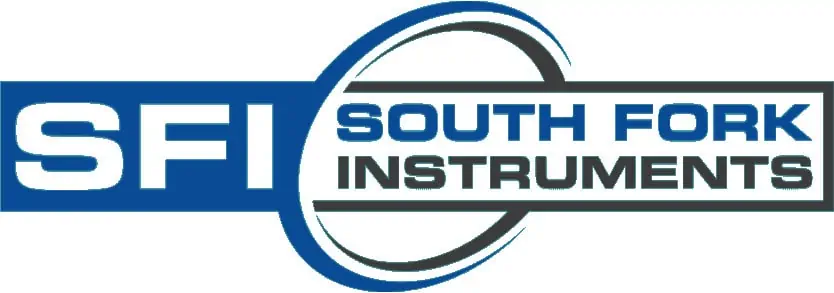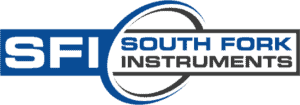I’m often asked whether Coriolis meters can measure mixed gas/liquid streams accurately. Unfortunately, the answer is not a simple yes or no. This is due to the volume of published material that offers information regarding (varying levels of) success in mixed stream measurements, but the limits of measurement are often vague and results specific.
Rheonik meters are tolerant of entrained bubbles, but issues with accuracy can still arise.
I can only speak to Rheonik meter performance, but from my experience, Rheonik meters are fairly tolerant of entrained bubbles, provided they are evenly distributed (e.g. foams are measurable because they are homogenous). However, accuracy will suffer—gas is compressible, and the movement of the tubes oscillating side to side will serve to compress the bubbles ever so slightly, so measurement will be affected (and potentially “noisy”) as they compress and decompress. The more gas, the more likely inaccurate readings will occur. It is difficult to quantify what that change in accuracy will be in a given application, because different applications react in different ways.
The good news is that density measurement will drop when bubbles are present. This drop is a strong indicator of their presence; it tells us what’s happening and indicates when accuracy may be suffering. Keep in mind that bubble regimes in a pipe can vary dramatically, from light bubbles all the way through slug flow and at some point, pretty much all Coriolis meters will fail to measure flow with any degree of reliability and usually end up in a fault condition.
Why are Rheonik Coriolis meters better at handling flows with entrained bubbles?
It really comes down to the unique mechanical construction of Rheonik meters. The mechanical construction uses a design that provides support for the measurement tubes rather than just letting them “dangle.” This alone improves performance when internal (pulsing/aeration) and external (vibration) disturbances are present. The drive method is torsional (rather than the solenoid style “bang-bang” drive in meters with unsupported tubing) and this ensures that there is positive drive force on the mechanism while it’s oscillating all of the time. The torsional nature of the drive along with the structured support for the measurement element means that Rheonik meters are typically better than most when measuring flow with entrained bubbles and therefore tend to go into fault less than other brands.
Some meters use electronic means to improve performance in mixed stream flows. Those electronic means range from masking meter fault condition by holding current value when it all gets to be too much to tweaking drive power and frequency in an attempt to keep up with the changing meter conditions. These work to end users satisfaction in many cases, but it is important to bear in mind that no one can handle erratic or slug flow situations in a Coriolis meter to the same accuracy as seen with single phase flows.
Rheonik transmitters have a feature called PFPM (partially filled pipe management) that can help when the flow regime gets too difficult.
The PFPM feature watches the reported density value (as one input while in operation) and should it drop below a preset threshold value or should the meter go into fault, the meter can be set to hold its current reading until it either reestablishes density above the threshold or times out. If bubble events are transitory, or even if there is a baseline aeration that worsens from time to time, PFPM can help mitigate bubble effects on the meter and therefore plant operation. Bubble events can often show up at the beginning or end of a process operation, when flows are lower, so the overall impact on accuracy is small. For operations where aeration is consistent, calibration factor adjustment can be used to correct for ongoing errors.
PFPM is a standard feature on all Rheonik meters with live density measurement capability and can certainly provide improved performance in difficult applications. It is also useful in detecting and reporting deteriorating measurement conditions—for instance, when reaching empty in a feed vessel—so action can be taken by operators or control systems before they become a problem. Coriolis meters equipped with advanced diagnostics capability such as Assurance Factor® diagnostics can be used in this way. With Assurance Factor®, it’s also possible to get a continuous readout of measurement quality so that events like increasing aeration are spotted and resolved before they become an issue.
A few other ways to try to improve bubble interference issues in Coriolis meter installations are:
- Increase back pressure on the meter if possible. This helps keep gases dissolved in the stream so they aren’t such a problem.
- If possible, install meters upstream of pumps or other equipment that might be causing the gas bubbles to form or be present in the flow.
- Change the meter orientation so it is in “flag” mode—inlet at the bottom, outlet at the top. Doing so can help prevent bubbles gathering at the high spot when entering the meter and creating slugs. This is not applicable in all situations.
Finally, thinner liquids with gas bubbles are tougher to measure than thick liquids. Highly viscous flows, if aerated, tend to stay in the same state because the bubbles can’t “escape” through buoyancy or coalesce together to form larger bubbles as easily. Provided bubbles are not slug-like in these situations, it shouldn’t be a problem to measure flow to reasonable accuracy.
Choice of meter is important. Always check out the available bubble effect mitigation features as part of the process of choosing a flow measurement solution for your process. Please feel free to contact us if you have any questions about the applicability of Rheonik Coriolis meters for your operations.

